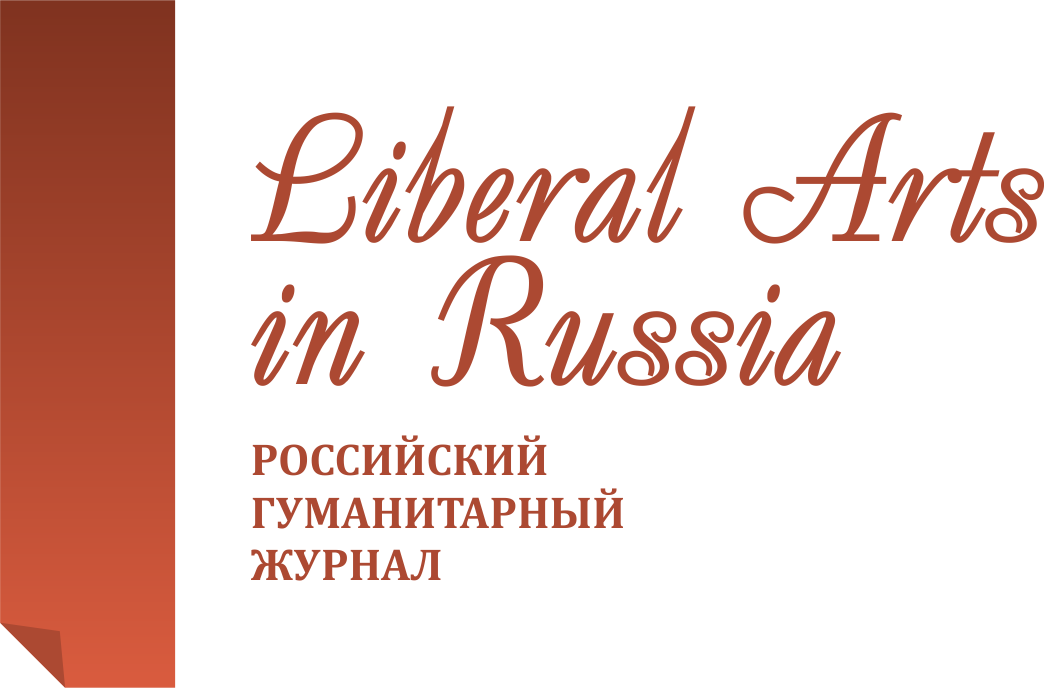A. Tennyson’s “Godiva”: the English national symbol in the Victorian poet’s perception
Liberal Arts in Russia. 2016. Vol. 5. No. 1. Pp. 44-51.
Get the full text (Russian) Email: sokol.n@list.ruAbstract
Lady Godiva’ image as the English national symbol attracted poets and painters not once. The aim of the present article is to clear out the reason for the largest popularity of Tennyson’s “Godiva”. Methodological basis of the work consists of history of literature, culture and history, socio-cultural approaches. History of the legend’s origin, of the transformation of historical person into national symbol is traced in the article, the peculiarities of the image’s perception in the Victorian epoch are revealed. Tennyson’s poem is compared with the Medieval legend’s treatment in Leigh Hunt’s poem and W. S. Landor’s “imaginary conversation”. The principle of typological symbolism, widespread in the Victorian literature, is taken into account at the analysis of Tennyson’s “Godiva.” The author of the article comes to the conclusion that Tennyson not only glorifies the greatness of Godiva’s action, but also reveals the highest sacred essence of her image, which endows his work with special meaning. The medieval reception of Godiva's march as a mockery of Catholic feast Corpus Christi, which goes up to the 17th century, is reconsidered in the Tennyson's poem. Godiva, who formerly felt as the figure, which is mocking Jesus Christ, now assimilated with Him; she makes a sacrifice of her corporality for the sake of Coventry. The interest to Godiva continues to persist. But it is Tennyson who makes her a national hero by allotting her a sacral status.
Keywords
- • legend
- • national symbol
- • Victorian epoch
- • poem
- • imaginary conversation
- • typological symbolism
References
- Donoghue D. Lady Godiva. A Literary History of the Legend. Malden: Blackwell, 2003. https://doi.org/10.1002/9780470776148
- Briggs K. M. A Dictionary of British Folk – Tales in the English Language: In 2 vol. London: Routledge and Kegan Paul, 1971. Vol. 2. Pp. 245.
- Reader W. Peeping Tom of Coventry and Lady Godiva. The Gentleman’s Magazine and Historical Chronicle. From July to December, 1826. London: John Nickols, 1826. Vol. XCVI. Pp. 20–22. URL: https://books.google.co.jp/books?id=N6hJAAAAYAAJ&pg=PA20
- Ruskin J. Lilies of Queens’ Gardens. URL: http://www.readbookonline.net/read/18614/53998/
- Landor W. S. Imaginary Conversations. A Selection. London: Oxford University Press, 1928. Pp. 201–208.
- Carlyle T. Past and Present. London: Chapman and Hall, 1845.
- Carlyle T. Lectures on Heroes, Hero – Worship and the Heroic in History. Oxford: Clarendon Press, 1925.
- Houghton W. The Victorian Frame of Mind. New Haven: Yale University Press, 1985.
- Hunt J. H. Leigh. Godiva. The Indicator and the Companion. A Miscellany: In 2 vol. London: Cox and Son, 1834. Vol. 1. Pp. 12–17. URL: https://books.google.kz/books?id=hQEXAAAAYAAJ&pg=PA12
- Hunt J. H. Leigh. Godiva. URL: http://www.poetrynook.com/poem/godiva
- Tennyson. The Critical Heritage. Ed. John D. Jump. London: Routledge and Kegan Paul, 1967.
- Tennyson A. Poems and Plays. London, 1975.
- Tennyson H. Alfred, Lord Tennyson. A Memoir. By His Son. London: Macmillan and Co, 1899.
- Landow G. William Holman Hunt and Typological Symbolism. New Haven: Yale University Press, 1979.
- Apostolos-Kappadona D. Slovar' khristianskogo iskusstva [Dictionary of Christian art]. Chelyabinsk: Ural L. T. D., 2000.
